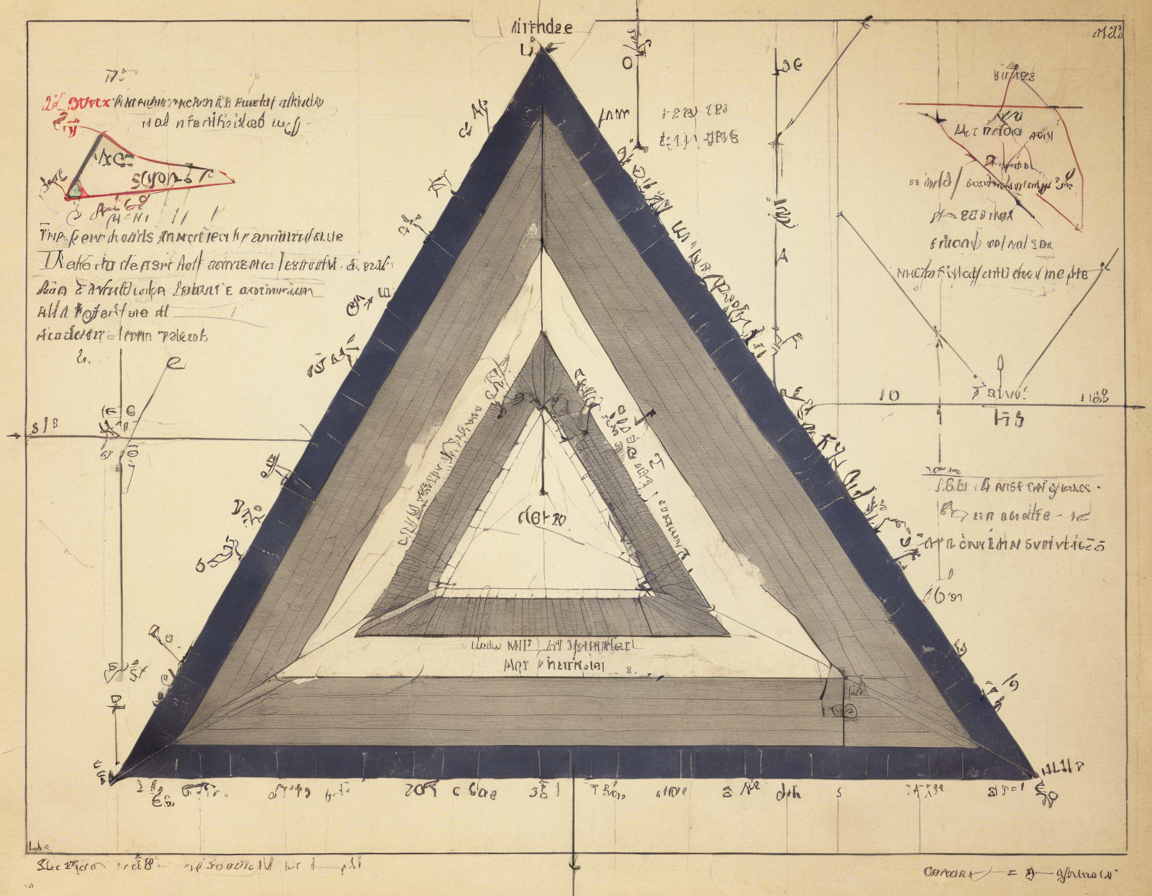When it comes to triangles, there are various elements and properties that play essential roles in understanding their characteristics and relationships. One such crucial element is the altitude of a triangle. In this comprehensive guide, we will delve into the concept of the altitude of a triangle, its significance, how it is calculated, and its applications in geometry. Whether you are a student seeking clarification on this topic or someone interested in exploring mathematical concepts, this article will provide you with a detailed insight into the altitude of a triangle.
The Basics of Altitude in a Triangle
In geometry, the altitude of a triangle refers to the perpendicular line segment drawn from a vertex of the triangle to the line containing the opposite side. This perpendicular line forms a right angle with the base of the triangle, known as the base of the altitude. Each triangle has three altitudes, one from each vertex, which intersect the opposite side at a right angle.
Properties of Altitude in a Triangle
-
Altitude is Perpendicular: The altitude of a triangle is always perpendicular to the base it intersects. This perpendicular relationship forms right angles, leading to the creation of similar triangles within the main triangle.
-
Altitudes Concur at Orthocenter: In every triangle, the three altitudes intersect at a single point known as the orthocenter. This point is a significant feature in triangle geometry and plays a crucial role in various triangle properties.
-
Altitude Length: The length of an altitude can vary from triangle to triangle, depending on the size and shape of the triangle. The altitude can be shorter than, equal to, or longer than the corresponding sides of the triangle.
Calculating Altitude of a Triangle
The altitude of a triangle can be calculated using various methods, depending on the information provided. Here are some common scenarios:
- Given Base and Height: If the base of the triangle and the length of the altitude (height) are provided, you can directly use the formula for the area of a triangle to calculate the altitude:
Area of Triangle = 0.5 * Base * Altitude
-
Using Trigonometry: In cases where angles or side lengths are known, trigonometric functions such as sine, cosine, or tangent can be used to determine the altitude length.
-
Pythagorean Theorem: If two sides of the triangle and the altitude from the included angle are known, the Pythagorean theorem can be employed to find the length of the altitude.
Applications of Altitude in Triangles
The altitude of a triangle finds applications in various fields, including:
-
Architecture: Architects use the concept of altitude in designing structures to ensure stability and strength, especially in triangular trusses and roofing systems.
-
Physics: In physics, the altitude of a triangle is utilized in calculating forces and vectors in equilibrium problems, where the properties of triangles play a significant role.
-
Navigation: Nautical navigation and aviation rely on understanding altitudes for determining distances and angles in charting courses and flight paths.
Frequently Asked Questions (FAQs) About Altitude of a Triangle
- What is the difference between altitude and height in a triangle?
Altitude in a triangle specifically refers to the perpendicular line segment from a vertex to the opposite side. Height is a general term referring to the measurement from base to top, which can be used interchangeably with altitude in the context of triangles.
- Can a triangle have more than one altitude from the same vertex?
No, each vertex of a triangle has only one altitude, which is perpendicular to the opposite side.
- How does the altitude of an equilateral triangle compare to its side length?
In an equilateral triangle, the altitude is equal to √3/2 times the length of a side of the triangle.
- Is the altitude of a triangle always inside the triangle?
The altitude of a triangle can lie both inside and outside the triangle, depending on the type of triangle and the positioning of the vertex and side.
- Does the altitude of a triangle bisect the angle at the vertex it originates from?
The altitude of a triangle does not necessarily bisect the angle at the vertex. It is perpendicular to the base of the triangle and does not divide the angle equally.
Conclusion
Understanding the altitude of a triangle is essential for exploring the various properties and relationships within triangles in geometry. From its role in determining the orthocenter to its applications in real-world scenarios, the altitude provides valuable insights into the nature of triangles. By grasping the concept of altitude and its significance, mathematicians, students, and enthusiasts can enhance their knowledge of geometric principles and applications in diverse fields.
